The number one priority at any preschool or Head Start is safety. Preschools will not receive licenses if they’re unsafe, so you better believe they all take safety seriously. Make sure to let the supervisor know if you ever see a teacher creating an unsafe environment for their students.
Keeping a classroom safe is a part of a teacher’s everyday habits. Some of the ways teachers keep a classroom safe include flip charts, zoning areas, strict dietary restriction practices, health checks, and violence reduction tactics. There will be brief moments when a classroom becomes unsafe because of an uncontrollable circumstance, such as a child having a random fit of rage. What’s important in these situations is how the preschool teachers react and redirect everything back to safety.
Flip Chart
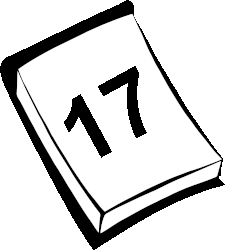 A flip chart is one type of tool preschool teachers use to keep track of the total number of students in their class for that particular day. A flip chart is a counting system. This reminds preschool teachers how many students are under their care. Teachers use it to count the number of students entering and exiting the classroom.
A flip chart is one type of tool preschool teachers use to keep track of the total number of students in their class for that particular day. A flip chart is a counting system. This reminds preschool teachers how many students are under their care. Teachers use it to count the number of students entering and exiting the classroom.
For example, when a student is being dropped off at school, the flip chart will be flipped to the number one on it. The number one represents the student in the class and is under a teacher’s care. When the next student enters the class, someone will flip the chart to the number two. At this point, the teacher is in charge of two students. You see where this is going. When the next student enters the classroom’s door, the number will be flip to number three and so on.
This flip chart is also used during pick up time. When a child is picked up from school, the flip chart will be flipped down to represent the total number of children waiting to be picked up by their parents. For example, a teacher has a total number of fifteen students. When a child is picked up, the number will be flipped to number fourteen.
There are many other reasons a child will leave the class and return, including occupational therapy sessions, speech therapy sessions, family service provider assessments, performing in another class, and parents picking up the child early from school.
This is a useful tool to help teachers keep track of the total number of students they are responsible for in the classroom.
Head Count
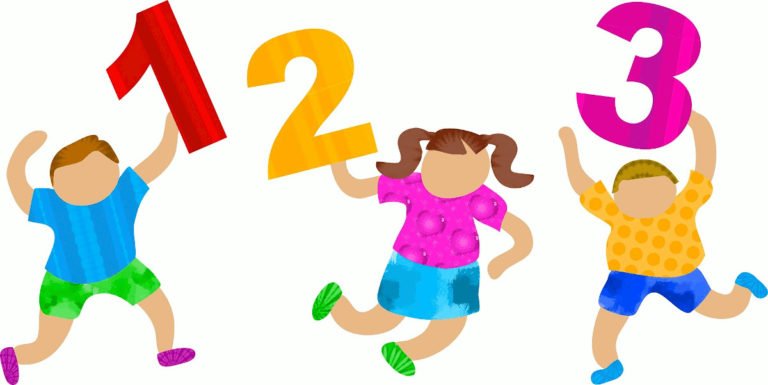
Head count is another system teachers use to also keep track of the total number of students. This can be used when students are leaving the classroom for recess and coming into the classroom from recess. Prior to exiting the classroom door for recess, the students will line up by the door. As teach student leaves the classroom door, a teacher will physically, lightly tap on each student’s head, and count up as each student leaves the door. The number of students heading out for recess should correspond to the number on the flip chart. When it is time to line up and enter the classroom from recess, a teacher will do the same tap and count method as the students enter the classroom.
This technique is used to ensure the safety of all preschool students and that all of the students are supervised on the playground for recess and in the classroom after recess. It is your responsibility of the students once they have been dropped off by their parents.
You can use this the Head Count technique for other purposes such as a fire drill, going on a field trip, a walk around the school grounds, and many more. Just remember to have your attendance chart with you so you know how many students are in class for the day.
Zoning Areas
Creates zones in a classroom is a supervisory technique that helps teachers keep track of children. In a classroom with 15 students and two teachers, there will typically be two zones for students and the rest of the room will be a “No Child Zone.” The doorway areas, kitchen, and restroom are the primary No Child Zones. These zones allows teachers to train the children to know where they can and can’t be. It also allows teachers to easily scan the room and know who is wandering around.
Managing Dietary Restrictions
Dietary restrictions are now common. For example, the rate of children with peanut allergies has increased 21% since 2010. This puts the number of children and teens with peanut allergies at 1.2 million. If you combine this with all the other dietary restrictions children may have, such as lactose intolerance, celiac disease, veganism, and others, you will find dietary accommodations to be pretty complex and hard to manage.
Strict Student Release Policies
It is vital to make sure teachers release students to their parents and the people listed on the emergency contact list. Make sure to check for a government issued ID at every time a child is picked up until you remember that person. Even if you are not sure, ID the person to keep yourself and the student safe. Sometimes people get upset when you don’t remember them, but safety in preschool is more important.
If an adult comes to pick up a student and they are not on the emergency contact list. It is okay to say No and not release the child them because you are responsible for that child. You want to make sure the child is safe and release to the right person.
To prevent this problem, it is best to let parents know of the school’s policy and that anyone who is not on the emergency contact list will not have the authority to pick up their child from school. No exceptions! It is best for parents to put everyone who can pick up their child from school on the list, whether it is five or ten people. Parents should list all of the people beforehand instead of going through the mess of constant phone calls from teachers, which can be very time consuming and frustrating. Staff have to keep all students safe once the students are in their care.
What About Children With Split Custody?
There are situations where students are split between two parents. Make sure you have each parent fill out an emergency contact list and put all the people who can pick up the child. For example, Tom’s dad has custody of him on Mondays, Wednesdays, and Fridays. Where as, Tom’s mom has him on Tuesdays and Thursdays. If Tom’s dad cannot pick him up on his custody days, make sure you release Tom to someone who is on Tom’s dad’s emergency contact list. The separate preschool emergency contact lists promote child safety in situations where one parent is trying to take the child from the other parent.
Managing Everyone’s Health
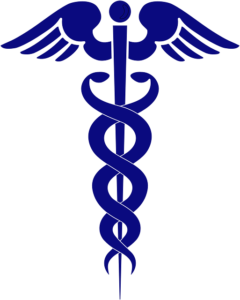 Kids get sick. Sometimes they don’t know they’re sick. Other times parents bring in their sick kids hoping teachers don’t notice. No matter the reason, preschool teachers are trained to make sure to promote classroom safety and see it is free of viruses, dirtiness, and bugs. Use the below items to learn techniques on how to minimize various health-related issues.
Kids get sick. Sometimes they don’t know they’re sick. Other times parents bring in their sick kids hoping teachers don’t notice. No matter the reason, preschool teachers are trained to make sure to promote classroom safety and see it is free of viruses, dirtiness, and bugs. Use the below items to learn techniques on how to minimize various health-related issues.
Health Checks
It is good practice for teachers to do a daily health check on their students upon arrival each day. Daily health checks will let both the teachers and parents know the student who walks into the classroom is healthy. If the child is and appears okay, the child will continue with the school routine. If not, the child will not be allowed to stay in class as a precaution. A teacher should check for signs of illness/sickness, cold, fevers and coughs.
Lice
A teacher should check every student’s hair weekly for lice. If a child has lice, the teacher will notify the parent. The teacher should also give the parents a paper on tips and tricks to get lice off along with a comb for lice. Once the child returns to school and is clear of lice according to the parents, the teachers should check the child to make sure there are no lice.
There are lots of resources online that will help you effectively check people for lice.
Colds and Fevers
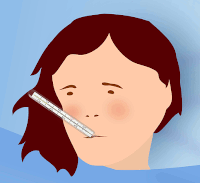 Students who have been out for a couple days due to an illness should have a doctor’s note stating the reason of absences. A return to school note should also be provided to let the teachers know the child is not contagious.
Students who have been out for a couple days due to an illness should have a doctor’s note stating the reason of absences. A return to school note should also be provided to let the teachers know the child is not contagious.
There will be situations where students come to school and looks healthy. As the day progresses, you see the child looks lethargic. You talk to the child and feel the child is hot. Take a temperature and if the child has a fever, call the parent to pick up the child from school. In the meantime, keep the child in a cool place and have the child drinks plenty of water. You should always practice safe measures.
Vomit
Students will vomit at school, especially if they are sick. If you notice a student not feeling well or vomiting, talk and ask questions and get answers from the student. There are policies regarding vomiting. Check with your workplace regarding their policy.
Wash your hands
It is extremely important to wash your hands frequently to keep the germs away. Teach your students how to wash their hands correctly. You can model and show them how to do so.
Another alternative is to have pictures of the steps of handwashing. Teach your students to wash their hands upon entering the classroom, before and after eating, after using the restroom, or when they are dirty. It doesn’t hurt to keep those tiny hands clean all the time.
Sanitize
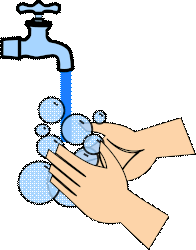 Sanitization is a big deal for preschool, especially if there is food in the classroom. Make sure to clean and sanitize classroom furniture after every table activity and meal. Don’t forget to clean the meal tables before you place plates, silverware, and food directly on it. Don’t forget to do the same for the floor. There will be a janitor to help clean the classroom at the end of the day, but it doesn’t hurt if you do it too. The classroom is never too clean, especially if it is full of students who loves to run, play, and get dirty. Give the students job duties and have them help keep the classroom clean. Every student loves to help their teacher and, believe it not, they will be fighting to clean up the classroom.
Sanitization is a big deal for preschool, especially if there is food in the classroom. Make sure to clean and sanitize classroom furniture after every table activity and meal. Don’t forget to clean the meal tables before you place plates, silverware, and food directly on it. Don’t forget to do the same for the floor. There will be a janitor to help clean the classroom at the end of the day, but it doesn’t hurt if you do it too. The classroom is never too clean, especially if it is full of students who loves to run, play, and get dirty. Give the students job duties and have them help keep the classroom clean. Every student loves to help their teacher and, believe it not, they will be fighting to clean up the classroom.
Food temperature and storage
According to the US Food and Drug Administration, there is a policy for every preschool sites who serves food to their students. All schools must be in compliance or you may be fined and have a bad review. The results of the review will be online and given to parents. No parent would want to enroll their child in a school with violations.
Child Violence
Preschool age children will randomly commit acts of violence, such as hitting, kicking, pushing, throw, spit, etc. We don’t always know why they do it, but the child must be treated with care regardless. Here are a few ways to help deal with child violence, or prevent children from acting violently.
Kindness Tree
A Kindness Tree is a large display that contains a collection of kind acts done by the students. Any act of kindness can be used to reward a student with a post on the Kindness Tree. Once a student learns that an act of kindness results in a reward, they will commit even more acts of kindness. This is a technique in positive reinforcement.
Incident Reports
Any time a child commits an act of violence, the teacher will write an incident report. Teachers will do four things in this process. Firstly, the teacher will talk to the student and attempt to solve the problem. Second, the teacher will write an incident report that includes a description of the event, the injuries, injury treatment, and precautions taken to prevent the incident from happening again. Next, the teacher will talk to the parents and give them report. Finally, Copies of the incident report go into the student’s file.
Follow Through on Consequences
Teachers use discipline to teach students right from wrong. When you tell a student that you will give him a sticker once he finishes his work, make sure you give him the sticker you promised him. If you don’t give the sticker after he completed his work, the student will start to not trust you because you did not follow through on your words. However, if the student did not finish his work and you still give him a sticker, the student will learn that he will get the sticker whether or not he finishes his work. In the future, he will learn he doesn’t need to complete his work to get the sticker.
It is extremely important that when you make the rules in preschool, you should stick to the rules and follow through with the consequences in order to promote safety all the time. For example, you mention to the students to put away the toys once they are done playing with it. If they don’t do it, they will not be able to play with it the next day. When you ask the student to put away the toy he is playing with and he refuses, you can remind him that if he doesn’t clean up he won’t get to play with it tomorrow. If he still chooses not to do so, help him put it away.
When the next day comes, you can tell him he cannot play with the toy because he did not clean it up yesterday. The child will get upset and throw a fit, but you will remind him of the consequences and ask what he should do when he is done playing with the toy. Once he gives you the correct response, you can give him the toy the following day.
Preschools Like Safety!
Safety is always the top concern at any preschool. If you are a parent concerned with your child’s safety, the best thing to do is to become a parent volunteer! If you’re looking for info on how to keep to keep your site safe, these are a great starting point. Good luck to all of you!

